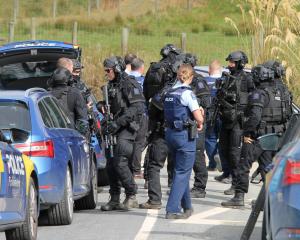
The Balclutha war monument was the focal point for the project, which compared the effect of war on Balclutha with that on Noumea, New Caledonia's capital city.
South Otago Museum curator Gary Ross, who attended the launch in Noumea last month, said the exhibition was a good opportunity to see how similar the two countries were.
"It was amazing to take our two stories [indigenous and colonial] and compare them with their two stories."
A representative from the indigenous Kanak people gave Mr Ross two fleche faitiere, carved rooftop spears which traditionally adorn major ceremonial houses. One fleche faitiere was presented by Mr Ross to Maureen Wylie, of Te Runanga Waikoau.
Mr Ross said the inclusion of tangata whenua in the monument interpretation was "paramount" for both sides of the exhibition.
The second spear was in quarantine and, when it arrives, Mr Ross plans to display it as part of the exhibition with the text and images at the museum next year, before moving it to his personal collection.
New Caledonia University history lecturer Stephane Pannoux was selected by the university to compare New Zealand museum practice with that of Noumea.
Mr Ross said the museum had a longstanding relationship with Mrs Pannoux and, when the opportunity arose in Noumea to compare the two countries through two monuments, she chose the Balclutha monument.
Three themes were selected to interpret the three figures on the monument.
Three families from the roll of honour were then chosen to represent the themes: O'Hara DCM (the soldier), Pennycook (hope) and Youngson (grief).
A variety of images, books and military archives and a transcript of the key speech from the 2011 Anzac commemorations in Balclutha were gathered together for the exhibition, which had to be translated into French.












